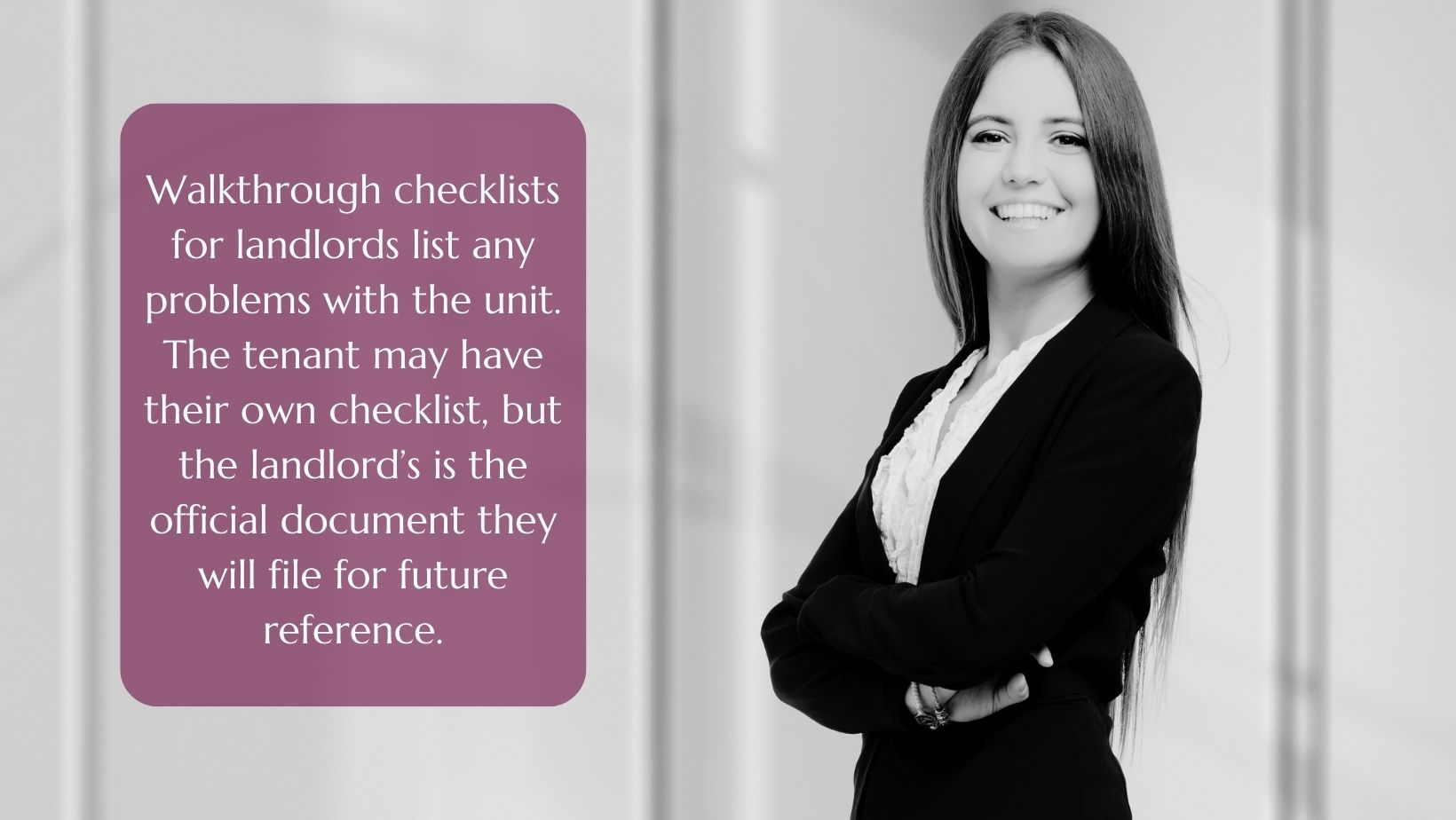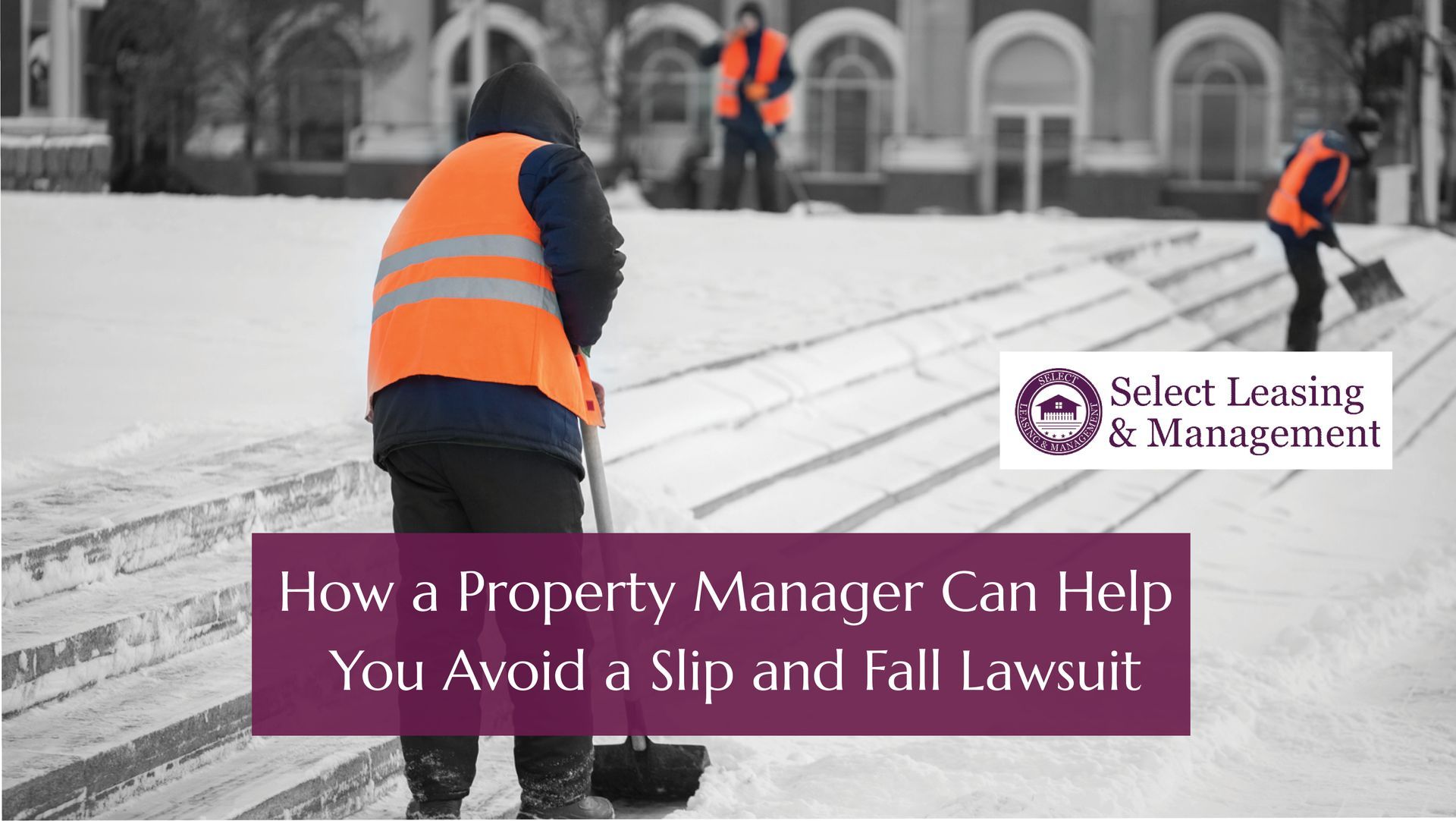A Walkthrough Checklist for Landlords

Landlords who use walkthrough checklists when tenants move in and out see better returns on their investment. Having documentation about the property’s condition before and after the tenant lived there takes away any guesswork. Clarity often reduces conflict when tenants move out.
Using an apartment walkthrough checklist benefits tenants, too. They appreciate landlords acknowledging what needs repairs in writing when they move in. In many cases, landlords fix problems found in the move-in inspection using funds from the new tenant’s security deposit. In addition to seeing the repairs made, tenants like having proof of the condition of the unit when they move in to ensure they are not liable for damage they did not cause when they move out.
Doing effective walkthroughs takes planning and an organized checklist. Learning from other property managers helps, too.
Timing for House and Apartment Walkthroughs
The prime times for house and apartment walkthroughs are right before the tenant moves in and just after they move out.
- Pre-move-in walkthrough: The property manager and new tenant walk through the home, taking notes on existing damage.
- Move-out walkthrough: The landlord and tenant inspect the property together with the first checklist and any pre-move-in photos in hand. Using one checklist for both the pre-move-in and move-out inspections makes it simple to compare the condition of the items on the list.
When to Get Rentals Inspected to Obey the Rules
States, counties, and cities have their own laws and regulations about rental property inspections. Missouri state law requires landlords to keep properties safe and livable. Property managers must do walkthrough inspections after a renter moves out, then return security deposits to tenants within 30 days.
Seventeen states have walkthrough checklists landlords must complete. Neither Missouri nor Illinois requires landlords to use a certain checklist.You can create your own by changing one of the
states’ forms or by using a walkthrough list template.
At Select Leasing and Management, we recommend using a checklist at move-in then comparing it to the move-out checklist. By doing so, you will be able to determine whether to refund the tenants’ full security deposit.
Cities and counties in the St. Louis area have their own guidelines. For example, University City requires inspections before issuing occupancy permits for rental units. A city inspection comes before a walkthrough with a tenant.
The St. Louis Housing Authority (SLHA) requires walkthroughs at move-in and move-out. Landlords and tenants must complete the city’s move-in walkthrough checklist together. A SLHA inspector completes the move-out walkthrough.

What to Include in a Walkthrough Checklist for Landlords
Walkthrough checklists for landlords list any problems with the unit. The tenant may have their own checklist, but the landlord’s is the official document they will file for future reference. It is a good idea to take photos with a camera that records the date and time on photos for proof of when the inspection occurred. The tenant may do the same thing.
Include the following sections on your move-in and move-out checklist:
Essential Features
At both move-in and move-out, check the condition of the floors, walls, ceilings, doors, electrical outlets, switches, light fixtures, windows, screens, and other items renters use every day. The features in this section get a lot of wear and tear. If the unit is older, they may not be perfect. Note the condition of the imperfections such as holes in the walls, loose tiles, or missing screens, but do not spend a lot of time writing out details unless there is considerable damage such as a water stain on a hardwood floor or chewed up carpet.
In a move-out inspection, look at whether the tenant made changes such as putting up wallpaper or painting. If they did, they need to restore the unit to its original condition.
Plumbing
Find out if plumbing problems exist by testing the faucets and toilets. Look for leaks around sinks and water damage to the ceiling and the floors. Check bathtubs and sinks for large cracks or chips and note whether caulking needs to be replaced. At move-out, see if problems noted at move-in have worsened.
Appliances
Test the kitchen appliances with the tenant watching. You will be showing them how the appliances work and that they work. Make sure to test every appliance from the microwave to the washer and dryer. At move-out, test the appliances again with the tenant watching and talk to them about how well the appliances are working.
Cabinets, Drawers, and Closets
Open and close the kitchen and bathroom cabinets. The hinges should be screwed in well and the doors should close all the way. Then, check the pulls and handles to see if they are tight.
Test the closet doors to see if they stay on the track or close tightly. In a move-in walkthrough, while you are checking the cabinets and closets, remove anything the previous tenant left. During the move-out walkthrough, check the cabinets, drawers, and closets for remaining items as well as their condition.
Stairs, Balconies, and Yards
If the unit has stairs, check handrails to make sure they are securely attached. If the unit includes a yard, garage, deck, or balcony, inspect those features, too. During a move-in walkthrough, check the yard for things the previous tenant left behind such as a swing set or trampoline and ask them to remove their property. You may also see damage from dogs. Note that on the move-in checklist then repair.
At move-out, review the items on the move-in list then remind the tenant to remove any personal property in the garage, in the yard, or on the balcony.
Safety Equipment
Make sure the tenant, and your property, will be safe by inspecting smoke detectors and carbon monoxide detectors. Missouri rental units must have working smoke detectors. Illinois rental units must have these safety features:
- A deadbolt lock and peephole;
- A smoke detector and carbon monoxide detector;
- And a fire extinguisher if the unit is in a building three or more stories.
Doing a pre-move-in walkthrough with a new tenant lays the foundation for a business relationship based on trust. Consider doing a mid-lease inspection, too, if you are concerned about the tenants damaging your property. For example, if you do not allow smoking on your property, and neighbors have reported the tenants are smoking, you can find out with a mid-lease inspection. You also may find repairs you can make before the end of the lease to keep the property in top condition.
Clients of Select Leasing and Management have access to
inspection guidelines in our portal and a place to store the lists and photos. The property management experts at Select Leasing and Management have many more tips on how to
build relationships with tenants.
Contact us today at (314) 835-6002 for help with your property management needs.
Cover Image by Photocreo by Canva.com
Share this post










